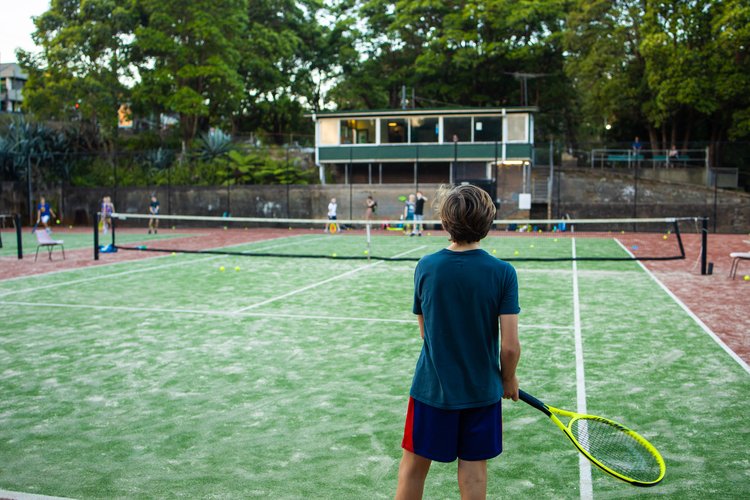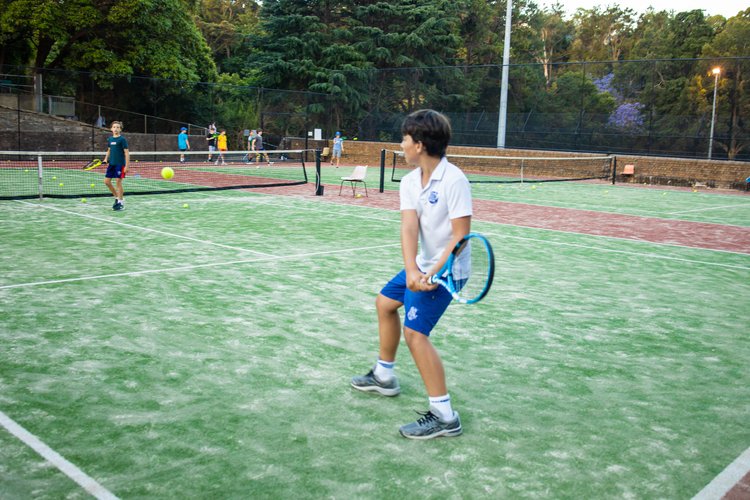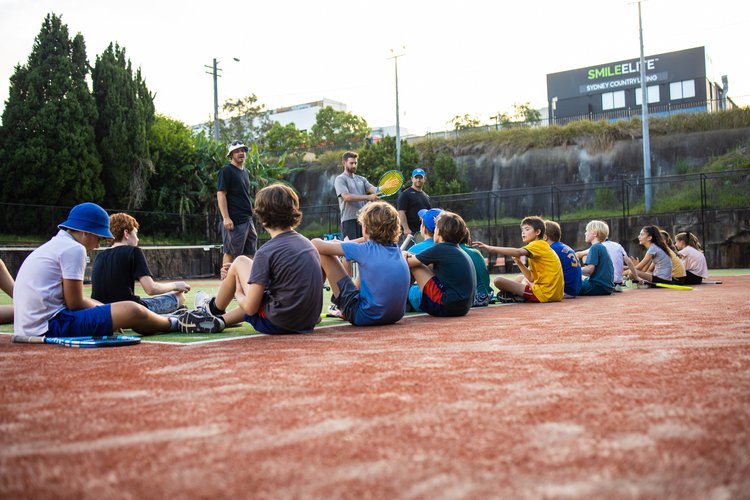What is Pickleball? It’s a sport that blends elements of tennis, badminton, and table tennis and has rapidly gained popularity in Australia, captivating enthusiasts with its unique blend of strategy and accessibility. This article presents the basics of pickleball for beginners, providing a clear and engaging overview of how to play pickleball and what makes it such an appealing activity for people of all ages. Whether you’re looking to understand the fundamental rules and equipment or simply why pickleball is becoming a fast favourite across australia, you’re in the right place.
The Origins and History of Pickleball
Pickleball’s history is as intriguing as the game itself, with its origins tracing back to 1965 on Bainbridge Island, near Seattle, in the United States. Created by three friends — Joel Pritchard, Bill Bell, and Barney McCallum — the game was initially devised to entertain their families over the weekend. They cobbled together equipment from available sports gear, using a badminton court, table tennis paddles, and a perforated plastic ball. This makeshift game was named “pickleball,” allegedly after Pritchards’ dog, Pickles, who loved to chase the ball around the court.
Over the years, pickleball has evolved from a backyard family activity into an internationally recognised sport with structured rules and a dedicated following. This evolution highlights the sport’s historical significance as it transitions from a casual pastime to a competitive and social sport, now embraced by communities worldwide, including Australia. The story of pickleball’s inception and its journey to global recognition encapsulates the spirit of innovation and community, core to the game’s enduring appeal.
Understanding Pickleball Courts
A fundamental aspect of getting into pickleball is familiarising yourself with the layout and dimensions of pickleball courts. These courts are meticulously designed to offer a balanced play area that accommodates the sport’s unique rules and playing style. Whether playing casually or competitively, knowledge of the court aids in mastering the sport. Here’s a closer look at the standard pickleball court layout and size:
- Dimensions: A pickleball court measures 20 feet (6.10 metres) in width and 44 feet (13.41 metres) in length, making it a compact space that encourages fast-paced and strategic gameplay.
- Net Height: The net stretches across the width of the court, standing at 36 inches (91.44 cm) high at the sidelines and dipping slightly to 34 inches (86.36 cm) in the middle.
- Service Areas: Each side of the court is divided into two service areas (left and right), with a non-volley zone (commonly referred to as the kitchen) extending 7 feet (2.13 metres) from the net on both sides. This zone is crucial for strategic plays and volley restrictions.
Pickleball Equipment Essentials
Having the right equipment is always required to fully enjoy and compete in pickleball. This enhances your game and ensures safety and adherence to the sport’s standards. Equipping yourself with the correct pickleball equipment is the first step towards mastering the game. Let’s delve into the essentials of pickleball equipment, with a particular focus on the racquet and other vital items:
- Paddle: The pickleball paddle, often called a racquet, is a bit larger than a table tennis paddle but smaller than a tennis racquet. It offers players precision and power, made from a composite of graphite, fibreglass carbon fibres and wood.
- Ball: Pickleball uses a specific lightweight, durable plastic ball with holes through it. These balls come in two types: indoor and outdoor, each designed to suit the playing environment’s conditions.
- Shoes: Proper footwear is essential for pickleball. Court or tennis shoes that offer good support and traction are recommended to navigate the court effectively and safely.
- Net: A portable pickleball net is standard equipment for setting up a game. It must meet the specific height and width requirements to ensure fair play.
Choosing the Right Pickleball Racquet
Selecting the ideal pickleball racquet is a pivotal decision that can significantly influence your game, regardless of whether you’re a beginner or an advanced player. Choosing the right pickleball racquet involves balancing factors like weight, material, grip size, and price to match your playing style and skill level, ensuring an enhanced and enjoyable game experience. Here are some tips to help you find the best pickleball racquet suited to your skill level:
- Weight: Lighter racquets offer more control and are easier on the arm, while heavier racquets provide more power. Beginners may prefer lighter racquets for ease of use, whereas advanced players might opt for heavier options for more forceful play.
- Grip Size: Ensure the racquet’s grip size matches your hand for comfort and control. Smaller grips allow for better wrist action, while larger grips can reduce arm fatigue.
- Price: Consider your budget. While beginners may opt for more cost-effective options, avid players might invest in higher-quality racquets for improved performance.
The Rules of Pickleball in Australia
While universally played with a common set of rules, pickleball has nuances that cater to local contexts, including Australia. Understanding these core pickleball rules in Australia enhances the playing experience, ensuring all participants engage in competitive and enjoyable matches while adhering to the sport’s spirit. Here’s a breakdown of pickleball rules specific to Australian players, providing clarity and fair play within the local framework:
- Serving: The serve must be made underhand, with the paddle below the waist, and diagonally across the court to the opponent’s service zone. The server continues until a fault is made.
- Double Bounce Rule: Before volleying, each side must allow the ball to bounce once following the serve. This regulation encourages rallies by giving the game an additional strategic depth.
- Non-Volley Zone: Also known as “the kitchen,” this space is 7 feet (or 2.13 metres) on both net sides. Players must not volley the ball while standing in this zone, preventing them from dominating play at the net.
- Scoring: Games are typically played to 11, 15, or 21 points, with the winning side needing to lead by at least 2 points. Only the serving team can score.
How to Play Pickleball – A Beginner’s Guide
Grasping these basic rules and guidelines is the first step toward enjoying and eventually mastering the pickleball game set. With practice and patience, beginners can quickly become proficient and fully enjoy pickleball’s dynamic and social nature. Here’s a simplified guide to help beginners dive into the game:
- Understand the Court: Familiarise yourself with the pickleball court layout, including the service areas, non-volley zones (the kitchen), and baselines. Knowing the court will help you position yourself correctly during play.
- Serving: The serve must be made underhand and diagonally across the court, landing in the opposite service box. Servers continue to serve until a fault is made.
- Scoring: Points can only be scored by the serving side when the opponent fails to return the ball or commits a fault. Usually, games are played to 11, 15, or 21 points, with the winner having a minimum two-point advantage.
- The Two-Bounce Rule: Before volleying, each side must allow the ball to bounce once after the serve. This rule applies to the serve and the return of serve, encouraging longer rallies and strategic play.
Understanding Pickleball Scoring
Pickleball scoring might initially seem daunting, but it’s pretty straightforward once you get the hang of it. This scoring system is designed to keep the game competitive and fair, allowing players of all levels to enjoy the sport. Keeping track of the score and knowing the serving rules are key to enjoying and succeeding in pickleball. Here’s a breakdown of the basic principles of pickleball scoring, explained in a way that beginners can easily understand:
- Points: A team must win by a margin of two points, with games usually lasting 11 points. For a longer play, matches can also be played to 15 or 21 points.
- Serving: Only the serving side can score points. If the serving team wins the rally, they score a point. If the receiving team wins, no point is scored, and the serve switches sides.
- Sequence: The serve is made from the right side of the court to begin the game. The server switches to the left side of the court for the subsequent serve if a point is scored, continuing to alternate as long as they keep winning points.
- Double-Bounce Rule: The ball must bounce once on each side following the serve before volleys (hitting the ball before it bounces) are permitted. This unique rule adds a strategic layer to the game.
Setting Up Your First Pickleball Game
Organising your first pickleball game is an exciting step towards engaging in this fun and sociable sport. Setting up your first game is straightforward. Here’s a simple guide to get you started:
- Find a Court: Look for a local community centre or park with a pickleball court. Ensure the court is available for play and reserve it if necessary.
- Gather Equipment: You’ll need a pickleball paddle for each player, a few balls, and portable nets if the court doesn’t have them installed.
- Understand the Rules: Familiarise yourself with the basic rules of pickleball, including scoring, serving, and the double bounce rule.
- Invite Players: Pickleball can be played singles or doubles, so invite friends or family members interested in playing. Make sure there’s a mix of skill levels for a balanced game.
How to Keep Score in Pickleball
Keeping score in pickleball is essential for a smooth game. Remembering how to score in pickleball is straightforward once you’ve played a few games, keeping the action competitive and fair. Here’s a quick guide:
- Scoring Format: The score is called out in the order of the serving team’s score, the receiving team’s score, and the server number (1 or 2 in doubles).
- Points: Only the serving side can score when they win a rally. Games are usually played to 11 and must be won by 2 points.
- Service Change: If the serving side loses a rally, the serve passes to the other team in singles or alternates between partners in doubles.
- Starting Serve: The game begins with a serve from the right-hand court. If a point is scored, the server swaps sides for the next serve, continuing this pattern for each point scored.
Join the World of Pickleball
Pickleball’s appeal lies in its simplicity, inclusivity, and the mere joy it brings to players of all ages and skill levels. It’s easy-to-learn nature and minimal equipment requirements make it highly accessible, allowing anyone to join in this sport’s fun and fast-paced action.
Discover Your Game with Discover Sports Group
Don’t just stand on the sidelines—venture into the dynamic world of pickleball with Discover Sports Group. Whether you’re picking up a paddle for the first time or looking to refine your skills, we’re here to support your journey. Trust us to guide you through every serve, volley, and point towards becoming a part of this growing community. Let’s make every game memorable. Join us now and experience the joy of pickleball!









